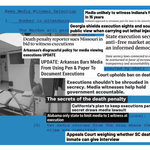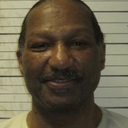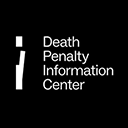
On December 18, Joseph Corcoran is scheduled to be the first person executed by Indiana officials in 15 years. For the first time, the state will use a single drug, pentobarbital, which comes from an unknown source and has been known to cause prisoners “excruciating” pain during executions. But no media witnesses will be present to relay what happens to the public. Indiana is an outlier in its policy decision to completely exclude the press from witnessing executions in the state. But a survey by the Death Penalty Information Center finds that many states now significantly restrict whether and how members of the press may observe and document the execution process.
Unobstructed media access to executions is critical because the media observes what the public cannot. States generally prohibit citizens from attending executions, so the media becomes the public’s watchdog, providing important information about how the government is following the law and using taxpayer funds. “We’re the ones that are there as the eyes and ears of the public, and we’re there to ensure that the state does it correctly,” said Rhonda Cook, a reporter for the Atlanta Journal-Constitution who has witnessed 28 executions. Without journalists seeing and hearing every step of the process, the public can only rely on official state accounts, which often refuse to acknowledge problems regardless of the evidence. For instance, without journalists reporting that Alan Miller was “jerking and shaking” and lifting his head off the gurney as he gasped for breath for over five minutes during his September 26 execution by nitrogen gas, the public would only have heard Alabama officials’ incredulous assurance that the execution went “as planned” and was “humane and effective.”
To determine whether lethal injection executions are fairly and humanely administered, or whether they ever can be, citizens must have reliable information about the ‘initial procedures,’ which are invasive, possibly painful and may give rise to serious complications. This information is best gathered first-hand or from the media, which serves as the public’s surrogate.

In March, criminal justice news outlet The Appeal challenged Georgia’s media access policy ahead of the scheduled execution of Willie Pye, the state’s first in four years. Georgia bars any witnesses from observing the preparation of execution drugs and equipment, and only allows one media witness to observe the prisoner being strapped to the gurney. During the execution, the state releases the drugs through tubes behind the wall and cuts audio access to the witness chamber. In the past, audio has been essential for media to document botched executions, as when media witnesses counted Joseph Wood gasping 640 times during his execution in Arizona or when Charles Warner said “my body is on fire” before he died in Oklahoma’s execution chamber. The Appeal, represented by the ACLU, argued that Georgia’s media restrictions are unconstitutional under the First Amendment, and “the public depend[s] on media witnesses’ ability to see and hear the entire execution process to receive complete and accurate information regarding how the State carries out one of the gravest of responsibilities to which it is entrusted.”
Georgia and Indiana are two of at least sixteen death penalty states that have passed new secrecy statutes since 2010, and every state that has conducted an execution in the past decade now has a secrecy statute. But a secretive approach to executions is an anomaly in American history. According to research by Professor Austin Sarat of Amherst College and students Theo Dassin and Aidan Orr, newspapers have routinely reported details of executions for hundreds of years, including who performed the execution and what materials were used. In the late 1800s, several states attempted to bar media from covering executions, but these bans were “widely flouted” and “short lived.” Historically, efforts to hide the identity of executioners were the exception rather than the rule.
Recent secrecy laws hide critical details like the source of execution drugs and the identities of execution team members from the public — sometimes even from death-sentenced prisoners and their lawyers, who must obtain a court order for these details. Lawmakers argue that the laws protect the safety of the people who assist in executions. However, researchers have found no evidence of a credible threat to any person associated with an execution. Instead, Professor Sarat notes, “new lethal injection secrecy statutes began to appear around the same time that state officials began procuring drugs illegally.” Pharmaceutical companies cut off their supply of drugs beginning in the late 2000s in response to media reports and public outcry surrounding botched lethal injections. Investigative reporters have since documented states’ dubious efforts to obtain execution drugs, including ordering drugs from overseas, exchanging suitcases of cash for drugs in parking lots, and relying on compounding pharmacies with histories of health and safety violations. The press has also uncovered evidence that states have used unqualified medical personnel to administer execution drugs.
Georgia’s policy “rightly invites suspicion,” Professor Sarat wrote for Verdict. “What is it that Georgia doesn’t want the press to witness and the public to know, and why does it want to restrict what the press can see and hear when it puts Pye to death?” Mr. Pye was executed on March 20. The Associated Press reported that as the pentobarbital was injected, he “began exhaling rapid bursts of air about a half-dozen times, causing his cheeks to expand and his lips to quiver each time.” The Georgia Supreme Court denied The Appeal’s emergency requests for full access to the execution.
DPI’s survey of the 27 states that authorize the death penalty, plus the federal government, found that media policies vary widely in how many journalists are allowed to attend an execution. The number ranges from zero in Indiana and Wyoming to 12 in Florida. Some states — including Alabama, which leads the country in executions this year — allow media access only at the discretion of the department of corrections. States differ on whether the DOC selects individual journalists, or whether designated media outlets are permitted to select the journalists who will attend.
States enshrine their media access policies in statutes, execution protocols, or informal guidance. Many appear to rely on the discretion of corrections officials, allowing states to restrict media access without notice. Many states also impose additional restrictions on media access not listed in their formal policies, such as cutting audio during the execution or permitting visual access to the prisoner only after the IV has already been inserted. Often these restrictions only become clear once journalists witness the execution. Broadly written policies allow states to claim openness and transparency but restrict essential access in practice. Only some states publicly clarify how journalists can document the execution; those states typically provide pencil and paper for journalists to take notes, but uniformly bar journalists from using recording devices, including cameras.
“Whether by legislation or administrative action, the last decade has witnessed a dramatic intensification and expansion of the regime of secrecy,” Professor Sarat wrote. “It represents a clear departure from traditions of disclosure surrounding the execution process.”
In Holden v. Minnesota (1890), the Supreme Court upheld a total ban on media access to executions, but has not ruled directly on the issue since. The Court held in Richmond Newspapers v. Virginia (1980) that the First Amendment guaranteed a public right to attend a murder trial. “To work effectively, it is important that society’s criminal process satisfy the appearance of justice, and the appearance of justice can best be provided by allowing people to observe it,” the Court wrote. However, the Court has also ruled that the press does not have greater constitutional rights than the general public to access prisons, and upheld several restrictions on media interviews with prisoners.1
Based on these precedents, some courts have found that the media has a First Amendment right to view an execution without obstruction.2 A California federal court ruled that the Constitution “mandate[s] the public’s presence during the entire execution,” because the “public’s perception of the amount of suffering endured by the condemned and the duration of the execution is necessary in determining whether a particular execution protocol is acceptable.” In affirming that ruling, the Ninth Circuit Court of Appeals held that “historical tradition strongly supports the public’s First Amendment right to view the condemned as the guards escort him into the chamber, strap him to the gurney and insert the intravenous lines.” Other courts have upheld restrictions on the process, such as using curtains to hide the IV insertion.3 Courts typically reject media requests to broadcast or record executions.4

Clarence Dixon
Even when a state allows media access to an execution, or enshrines certain requirements in its execution protocol, there is no guarantee those policies will be followed. Arizona state law authorizes up to five media witnesses, but the state only approved three reporters to attend the 2022 execution of Clarence Dixon and denied access to the Arizona Republic, the state’s largest-circulation newspaper. A federal district court had ordered the Department of Corrections to allow witnesses to view the entire execution, but the state blocked their view of a portion of the process. The Arizona Republic accused the DOC of retaliating against the paper for its critical reporting on the state’s death penalty. The execution, the state’s first in eight years, was botched, illustrating the importance of unobstructed media access; the execution team tried for 25 minutes to insert an IV line as Mr. Dixon grimaced in pain, before cutting into Mr. Dixon’s groin to place the IV.
Other media have also alleged retaliation by state officials after critical reporting about executions. In 2013, investigative journalist Chris McDaniel discovered that the pharmacy supplying execution drugs to Missouri was not licensed to sell in the state, forcing the DOC to find a new supplier. The DOC then repeatedly denied Mr. McDaniel’s applications to attend executions despite his long history of reporting on Missouri’s death penalty. In 2018, the state agreed to change its media witness policy to settle a lawsuit from Mr. McDaniel and the ACLU. Where before the DOC director had sole discretion to choose witnesses, the state’s new policy allowed Missouri media agencies and the Associated Press to select the reporters that will attend an execution.
Media pressure has resulted in policy changes in other states as well. In 2017, Arkansas sought to restart executions after a 12-year pause — but the DOC announced that the three allotted media witnesses would not be allowed a pencil or paper to take notes. “I trust your ability to be able to clearly and concisely report what you would have witnessed,” department spokesman Solomon Graves told reporters. After KUAR and the Arkansas Times reported on the policy, the DOC reversed course and authorized notetaking during the execution of Ledell Lee.
Some states have prohibited media access to death-sentenced prisoners before their executions, which further restricts public insight into key problems with a state’s death penalty or execution process. Several states, including Idaho and Tennessee, bar interviews with prisoners after an execution warrant has been issued. These restrictions align with widespread state efforts to “chill” prisoner correspondence with media — to suppress the ability of incarcerated people to share their experiences with the public. “Much of what is known about incarceration comes from people who have been on the inside and have told their stories at great personal risk,” writes Brian Nam-Sonenstein for the Prison Policy Initiative in a report documenting these restrictions.
South Carolina bars interviews with all prisoners under any circumstances. This policy provoked a recent lawsuit by the ACLU, which seeks to interview death-sentenced prisoner Marion Bowman, whom the state has indicated will be the next person scheduled for execution. In September, a federal district judge dismissed the lawsuit, but the Fourth Circuit heard the ACLU’s appeal on November 12. The ACLU argues that the state’s policy “furthers too little and suppresses too much,” violating First Amendment free speech rights.
The trend towards secrecy in executions has provoked bipartisan criticism. State secrecy laws connected to capital punishment should be overturned in favor of increased government transparency and accountability,” Senior Fellow Colleen P. Eren argued recently in an article for the conservative libertarian Reason Foundation. “Transparency would allow for principles inextricable from democracy and the free market, including freedom of access to information on which citizens base their decisions for spending, governance, and policy, to flourish.” For Mr. Corcoran’s scheduled December execution, the Indiana Libertarian Party and the Indiana Catholic Conference are among the groups who have publicly declared their opposition.
The Supreme Court commented on the consequences of secrecy in the criminal justice system in Richmond Newspapers v. Virginia. “People in an open society do not demand infallibility from their institutions, but it is difficult for them to accept what they are prohibited from observing.”
Media Execution Access Policies
| State | Number of Media Witnesses to Execution | Witness News Outlet Requirements | Pre-Execution Prisoner Interview | Source |
|---|---|---|---|---|
| Alabama | Discretion | N/A | Y | Ala. 15 – 18-83; ADOC Public Information Policy (2023) |
| Arizona | 5 | Arizona media selected from print, radio, TV, and local market where crime occurred | Y (phone only) | Execution Protocol (2022) |
| Arkansas | 3 | One Arkansas print reporter, one Arkansas radio/web/TV reporter, one Associated Press member | Y | Arkansas Times Coverage (2017); Arkansas Democrat-Gazette Coverage (2017); ADOC News Media Policy (2018) |
| California | Discretion (“12 reputable citizens” allowed) | N/A | Y | CA Penal Code 3605; CA ADC 3261.5 |
| Florida | 12 | One chosen by Florida Radio Network, one chosen by Florida Bureau Chief of Associated Press, five chosen by Florida Association of Broadcasters including one from county where crime occurred, five chosen by Florida Press Association including one from county where crime occurred | Y | Execution Protocol (2023); Fla. Admin. Code R. 33 – 104.201 – 203 |
| Georgia | 5 (only 1 views preparation) | One from Associated Press, two from Georgia Association of Broadcasters, two from Georgia Press Association; one selected as media monitor, preferably from county of conviction, to view preparation | Y | For Media – Access for Scheduled Executions; How Do I Schedule an Inmate Interview? |
| Idaho | 4 | One from Associated Press, one from region where crime occurred, one Idaho print/internet reporter, one Idaho broadcast reporter | N (under warrant), discretion (no warrant) | Execution Protocol (2024); Idaho Code 19 – 2705 |
| Indiana | N/A | Y | IC 35 – 38‑6 – 6; IDOC Distribution of Information Policy (2023) | |
| Kansas | Discretion (“10 official witnesses”) | N/A | Y | KS Stat 22 – 4003; Kan. Admin. Regs. 44 – 1‑102 |
| Kentucky | 9 | One from daily newspaper with largest circulation in county of execution, one from Associated Press, one from Kentucky Network Inc., three from Kentucky radio/TV, three from Kentucky newspapers | Y | KY Rev Stat 431.250; 510 KAR 16:300; Kentucky Corrections News Media Policy (2014) |
| Louisiana | 3 | One from Associated Press, one from parish where crime occurred, one from all other requests | Y | Execution Protocol (2014) |
| Mississippi | 8 | N/A | N | MS Code 99 – 19-55(2) |
| Missouri | 4 | One chosen by Associated Press, one chosen by Missouri Broadcaster’s Association, one chosen by Missouri Press Association, one from Missouri media agency with preference to those located where crime occurred | Y | MDOC Execution Witnesses Manual (2018); For Media Professionals |
| Montana | 3 | One Montana broadcaster, one Montana Associated Press member, one national/international reporter | Y | Execution Protocol (2013) |
| Nebraska | 2 – 6 | Nebraska reporters | Y | NRS 83 – 970; Access to Public Information Policy (DCS) |
| Nevada | 6 | Two from county of sentencing, two from Nevada, one international wire service operating from Nevada, one from Nevada “chosen dependent upon the circumstances of the particular execution” | Y | Execution Protocol (2021); News Media Policy (2018); further procedure in “Confidential Execution Manual” |
| North Carolina | 5 | Two chosen by North Carolina Press Association, one chosen by Radio-Television News Director’s Association of the Carolinas, one chosen by Associated Press | Y (in person only) | Execution Protocol (2013) |
| Ohio | 3 (minimum) | One from newspaper, one from TV, one from radio | Y | ORS 2949.25; OAC 5120 – 9‑16 |
| Oklahoma | 5 | One from local market where crime occurred, one from Associated Press, preference for Oklahoma media for remaining three | Y* | Execution Protocol (2020); Information Management Policy (2024) |
| Oregon | 5 | Two chosen by Oregon Association of Broadcasters, two chosen by Oregon Newspaper Publisher’s Association (one from county of sentence), one chosen by Associated Press | Y | OAR 291 – 024-0020; Oregon Death Penalty (DOC) |
| Pennsylvania | 6 | N/A | Y | 61 Pa. C.S. 4305(a); For Reporters (DOC) |
| South Carolina | 3 | One from “dominant wire service,” one from print media, one from electronic news media | N | SCDC News Media Policy (2013); SC Code 24 – 3‑550 |
| South Dakota | 2 (minimum) | One from local market where crime occurred, if possible | Y | Execution Protocol (2020); Relationship with News Media Policy |
| Tennessee | 7 | One from Associated Press, one from county where crime occurred, one metro print news outlet, one community print news outlet, two TV news outlets, one radio news outlet | N | Execution Protocol (2018) |
| Texas | 5 | One from Huntsville Item, one from Associated Press, three selected from applicants | Y | 37 Tex. Admin. Code 152.51; TDCJ Victim Services Executions Info Packet; Media Policies and Guidelines for Inmate Interviews (TDCJ) |
| Utah | Discretion | N/A | Y | Utah Admin. Code R251-107 – 7 (amended in 2011 to eliminate language forbidding recording devices and allowing pen/paper); Media Information (DOC) |
| Wyoming | 0 (unless qualified as friend or relative of prisoner, up to 10) | N/A | Y | Media and Public Relations Policy (DOC); WY Stat 7 – 13-908 |
| Federal | 10 | One local source from city of institution, three from FCC-licensed TV news programs (at least two national broadcasts), two from area where crime occurred, one wire service reporter, one radio reporter, two print reporters | Y | Execution Protocol (2004) |
*According to the Oklahoma Department of Corrections’ Information Management Policy, (eff. 8/20/24), section VI(B)(1)(g), “Media interviews will not be allowed for any inmate sentenced to death, assigned to death row, or awaiting execution.” However, according to the Public Relations office of the DOC, this provision only applies to in-person interviews; death row prisoners may participate in media interviews by phone.
Skylar Laird, Appeals Court weighing whether SC death row inmate can give interview, South Carolina Daily Gazette, November 12, 2024; Leslie Bonilla Muñiz, Media unlikely to witness Indiana’s first execution in 15 years, Indiana Capital Chronicle, November 11, 2024; Lauren Gill, “Agony” and “Suffering” as Alabama Experiments with Nitrogen Executions, The Intercept, October 8, 2024; Casey Smith, What is pentobarbital? More questions than answers surround Indiana’s new execution drug, Indiana Capital Chronicle, July 5, 2024; Colleen P. Eren, State execution secrecy laws are anti-free market and at odds with an informed democracy, Reason, June 21, 2024; Chaya Tong, Georgia shield execution sights and sounds from public view when carrying out lethal injection, Georgia Recorder, March 28, 2024; Jeff Martin, Man put to death for 1993 killing of ex-girlfriend, Georgia’s first execution in years, Associated Press, March 21, 2024; Austin Sarat, Georgia Court Case Tests the Limits of Execution Secrecy in the United States, Verdict, March 15, 2024; Botched Executions, Death Penalty Information Center, last updated February 28, 2024; The Appeal v. Oliver et. al, Complaint, filed March 8, 2024; Austin Sarat, Theo Dassin, and Aidan Orr, A Dark Shadow: The Intensification and Expansion of Lethal Injection Drug Secrecy, 12 Br. J. Am. Leg. Studies 1 (2023); Brian Nam-Sonenstein, Breaking news from inside: How prisons suppress prison journalism, Prison Policy Initiative, June 15, 2023; Renuka Rayasam, States try to obscure execution details as drugmakers hinder lethal injection, USA Today, March 29, 2023; Staff, Arizona Violated Court Order to Allow Media to Witness Execution, Lawyer for Newspapers Says, Death Penalty Information Center, June 2, 2022; Rebecca Boone, Idaho Committee Kills Bill Expanding Execution Drug Secrecy, Associated Press, March 9, 2022; Kevin Fixler, Cash buys, private flights, changing rules: How Idaho hides from execution oversight, Idaho Capital Sun, January 16, 2022; Kim Chandler, Alabama only state to limit media to 1 witness at execution, Associated Press, October 19, 2021; Michael Tarm, Lawyers: Autopsy suggests inmate suffered during execution, Associated Press, August 21, 2020; Josiah Bates, Why the Justice Department’s Plan to Use a Single Drug for Lethal Injections is Controversial, Time, July 29, 2019; Ayan Ajeen, A 50 State Prison Policy Analysis on Media Access, Senior Honors Thesis, UNC Chapel Hill (2019); Staff, Investigation Reveals Texas Obtained Possibly Tainted Execution Drugs from Pharmacy With Tainted Safety Record, Death Penalty Information Center, November 29, 2018; Chris McDaniel, Inmates Said The Drug Burned As They Died. This Is How Texas Gets Its Execution Drugs., BuzzFeed News, November 28, 2018; Staff, Missouri Department of Corrections Changes Policy for Witnessing Executions, ACLU of Missouri, November 27, 2018; Anne L. Precythe, Missouri Execution Witnesses Policy, Missouri Department of Corrections, November 15, 2018; Robin Konrad, Behind the Curtain: Secrecy and the Death Penalty in the United States, Death Penalty Information Center (2018); Lauren Gill, Death penalty reporter sues Missouri in bid to witness executions, Columbia Journalism Review, August 21, 2018; Jacob Kauffman, UPDATE: Arkansas Bars Media From Using Pen & Paper To Document Executions, KUAR, April 20, 2017; Lindsey Millar, Arkansas’s disgraceful policy for media viewing executions, Arkansas Times, April 20, 2017; Ed Pilkington, Death penalty states illegally imported drugs for executions despite warnings, The Guardian, October 23, 2015; Kate Esther Rapp, The Statutory Implications of the Public’s Right to View Executions: A State by State Analysis, 34 Miss. C. L. Rev. 288 (2015); Stephanie Mencimer, State Executioners: Untrained, Incompentent, and “Complete Idiots,” Mother Jones, May 7, 2014; Philadelphia Inquirer v. Wetzel, 906 F.Supp.2d 362 (M.D. Penn. 2012); Arkansas Times v. Norris, 2008 WL 110853 (E.D. Ark. 2008); Rice v. Kempker, 374 F.3d 675 (8th Cir. 2004); California First Amendment Coalition v. Woodford, 299 F.3d 868, 876 (9th Cir. 2002); California First Amendment Coalition v. Woodford (N.D. Cal. July 26, 2000); Richmond Newspapers v. Virginia, 448 U.S. 555 (1980); Houchins v. KQED, Inc., 438 U.S. 1 (1978); Garrett v. Estelle, 556 F.2d 1274 (5th Cir. 1977); Pell v. Procunier, 417 U.S. 817 (1974); Saxbe v. Washington Post Co., 417 U.S. 843 (1974); Holden v. Minnesota, 137 U.S. 483 (1890).
-
See Pell v. Procunier, 417 U.S. 817 (1974); Houchins v. KQED, Inc., 438 U.S. 1 (1978); Saxbe v. Washington Post Co., 417 U.S. 843 (1974).
-
See, e.g., California First Amendment Coalition v. Woodford, 299 F.3d 868, 876 (9th Cir. 2002); Philadelphia Inquirer v. Wetzel, 906 F.Supp.2d 362 (M.D. Penn. 2012).
-
See, e.g., Rice v. Kempker, 374 F.3d 675 (8th Cir. 2004); Garrett v. Estelle, 556 F.2d 1274 (5th Cir. 1977).


